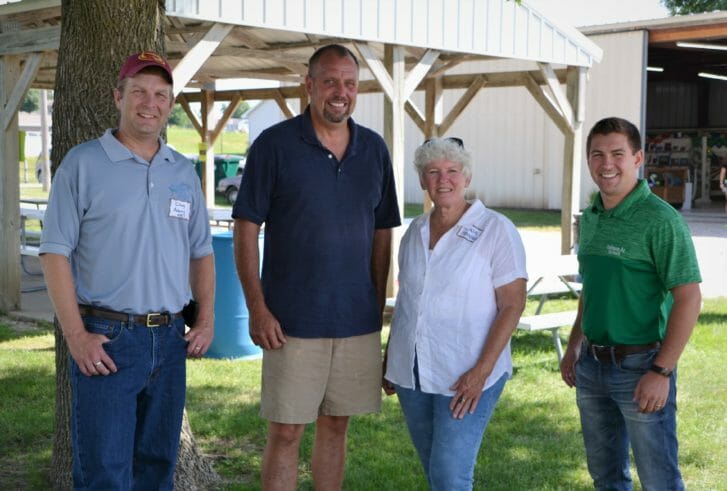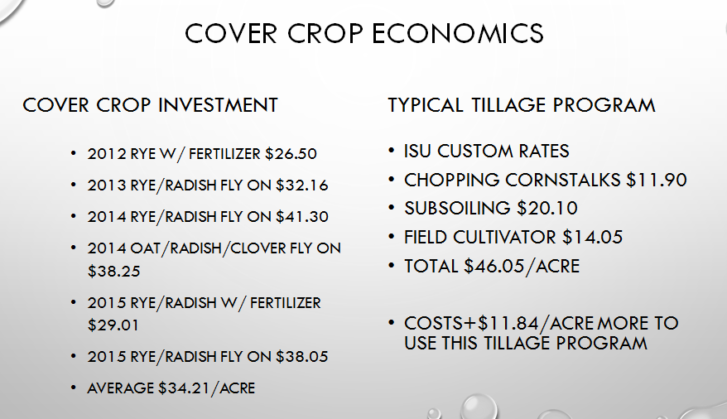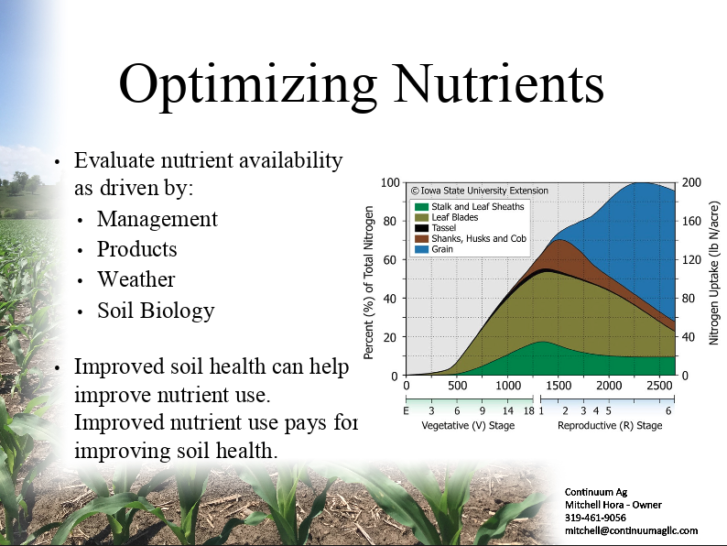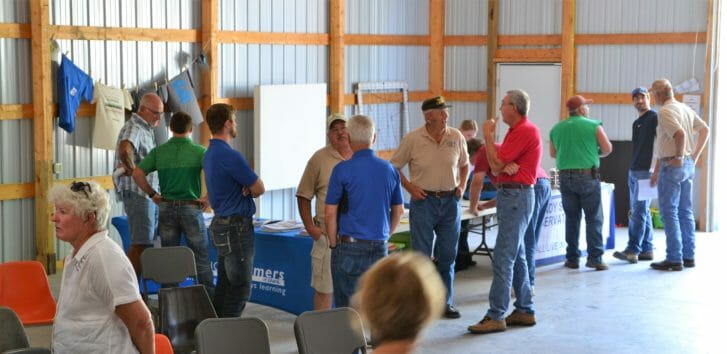Field Day Recap: Cover Crops & Soil Health at the Grundy County Fair

From left to right: Doug Adams, Seth Watkins, Chris Henning and Mitchell Hora
Doug Adams, a sixth-generation farmer in north central Iowa, led off the day’s presentations. He started using cover crops in 2012 and now uses cover crops on 100% of his own farmland. He advocates for experimenting on a small patch first, “The best way to learn how to manage it is to try it.” He shared some of his own experiments with different mixes, planting dates and application and termination methods. He also shared how environmental factors like rain and heat affected his results. At the end of the day, Doug finds that investing in cover crops pays off – he saves almost $12/acre when compared to a typical tillage program. Follow Doug Adams on Twitter @farmerdoug93.

Doug Adams saves almost $12/ acre by incorporating cover crops into his rotation.
Next we heard from Chris Henning, a landowner and conservation advocate from the Raccoon River Watershed. Chris feels she has a responsibility to care for the land and pass it down to the next generation so she prioritizes pollinator and wildlife habitats. She works collaboratively with her tenant farmer to find practices that can both improve soil health and increase plant diversity. By incorporating cover crops into her tenant’s rotation, she’s been able to reduce erosion, control weeds and produce 200-bushel corn on land that used to flood every year. The benefits of soil health practices are most apparent when floods that have devastated her neighbors’ farmland have left hers relatively unscathed. In fact, her tenant farmer was so impressed by the cover crops that he is now planting them on his own land! For Chris the biggest perk isn’t about the soil at all but about the lifestyle and the aesthetic of the farm. She basks in the beauty of her wildflowers at sunset and enjoys watching the turtles, beavers, deer and birds that have a home on her property.
Mitchell Hora, owner of soil health consulting company Continuum Ag, presented next. He showed how he uses data to fine-tune his operation, monitor his farm and accelerate progress. By conducting trials, taking advantage of modern tools like advanced soil testing and documenting each baby step with pictures and videos, he is able to understand his soil beyond NPK, down to a micro level. This enables him to optimize his farm practices around ideal nutrient availability and create soil that is dynamic and resilient – less subject to the highs and lows of fertilization and tillage. Although it requires a higher level of management, it pays off in reduced input costs for herbicide and fertilizer. He sees a future where farmers will be able to use sensors to adjust rates and timing based on real-time data. He believes that early adoption of these practices will put him in a good position to take advantage of emerging markets to meet the increased demand for sustainably-sourced products. To learn more you can visit his website at http://www.continuumagllc.com/.

Healthy soil pays for itself by reducing nutrient loss
Seth Watkins closed out the day by sharing how his approach to farm management has evolved over the last 20 years. He views his farm as a living system and found that by focusing on stewardship rather than costs and production, over time quality improved and costs went down. Late season calving, pond installation and rotational grazing of cover crops produced more calves with higher weaning weights and they required less feed, fuel and labor. Shifting to no-till and diversifying his crop rotation required less tillage and nitrogen, and it created more resilient soil that allowed for timely planting and harvest. “I’m working with mother nature, rather than against her. As you start to see the results and understand how each part complements the other, it becomes infectious.”

Field days are a great opportunity to network and learn from each other
